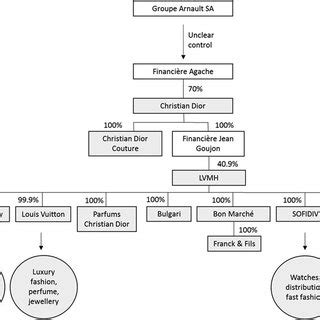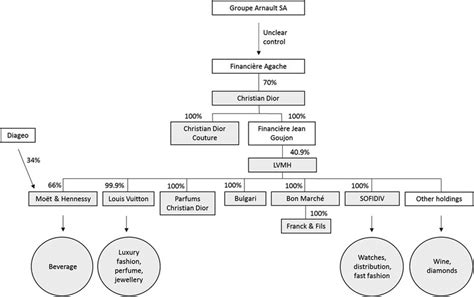organizational structure of louis vuitton | lvmh shareholders organizational structure of louis vuitton The organizational chart of Glenmorangie displays its 17 main executives including Caspar . Restaurants. The Grille. Quick fare for fast times. Take a quick stop at The Grille and get back to gaming lickity split. Hours. Open 24 hours. Menus. Main. Menu items & prices are subject to change; takeout fees may apply. Information is accurate at time of posting. Contact the restaurant directly for inquiries pertaining to the menu.
0 · lvmh shareholders
1 · lvmh organizational structure
2 · lvmh organizational chart
3 · Louis Vuitton organizational culture
4 · Louis Vuitton organizational chart
5 · Louis Vuitton management team
6 · Louis Vuitton ceo
7 · Louis Vuitton business structure
The following is a list of Astrologian's Arms from Final Fantasy XIV. Composed of highly ornamented planispheres, star globes, and other star-reading devices, they are used by Astrologians. They are considered to be two-handed, preventing use of .
The organizational chart of Louis Vuitton displays its 75 main executives including Pietro Beccari and Pharrell Williams.The organizational chart of Glenmorangie displays its 17 main executives including Caspar .
The organizational chart of LVMH displays its 1412 main executives including Bernard Arnau.

A family group founded in 1987 and headed by Chairman and CEO Bernard Arnault, LVMH is now home to 75 iconic Maisons, which embody a distinctive art de vivre blending heritage and modernity.Founded in 1987, LVMH was created by the merging of Moët Hennessy and Louis Vuitton, marking the beginning of a new era in luxury. Bernard Arnault has headed the Group since 1989 and is its majority shareholder with a clear .
LVMH Moët Hennessy Louis Vuitton , commonly known as LVMH, is a French multinational holding company and conglomerate specializing in luxury goods, headquartered in Paris. The company was formed in 1987 through the merger of fashion house Louis Vuitton (founded in 1854) with Moët Hennessy, which was established following the 1971 merger between the champagne producer Moët & ChandonFounded in 1987, LVMH was created by the merging of Moët Hennessy and Louis Vuitton, marking the beginning of a new era in luxury. Bernard Arnault has headed the Group since .
lvmh shareholders
The organizational chart of LVMH displays its 1412 main executives including Bernard Arnault, Jean-Jacques Guiony and Michael Burke.

The company's brand management strategies focus on brand acquisition, development, synergy, and collaboration, with iconic brands such as Louis Vuitton, Christian Dior, Moët & Chandon, . Decentralized organizational structure. In decentralized organizations, most decisions are made by mid-level or lower level managers, rather than by the head. Each “Maison” or brand at LVMH operates .
EXECUTIVE COMMITTEE. The LVMH Executive Committee comprises executives who head the Group's operational and functional entities. It defines strategic objectives aligned with the .
While Louis Vuitton’s products are usually brown and classical, the introduction of colorful goods helped to strengthen the brand among new generations of customers.
lvmh organizational structure
The organizational chart of Louis Vuitton displays its 75 main executives including Pietro Beccari and Pharrell Williams.
A family group founded in 1987 and headed by Chairman and CEO Bernard Arnault, LVMH is now home to 75 iconic Maisons, which embody a distinctive art de vivre blending heritage and modernity.Founded in 1987, LVMH was created by the merging of Moët Hennessy and Louis Vuitton, marking the beginning of a new era in luxury. Bernard Arnault has headed the Group since 1989 and is its majority shareholder with a clear vision: to make LVMH the world leader in luxury goods.
The company was formed in 1987 through the merger of fashion house Louis Vuitton (founded in 1854) with Moët Hennessy, which was established following the 1971 merger between the champagne producer Moët & Chandon (founded in 1743) and the cognac producer Hennessy (founded in 1765).Founded in 1987, LVMH was created by the merging of Moët Hennessy and Louis Vuitton, marking the beginning of a new era in luxury. Bernard Arnault has headed the Group since 1989 and is its majority shareholder with a clear vision: to make LVMH the world leader in luxury goods.
The organizational chart of LVMH displays its 1412 main executives including Bernard Arnault, Jean-Jacques Guiony and Michael Burke.The company's brand management strategies focus on brand acquisition, development, synergy, and collaboration, with iconic brands such as Louis Vuitton, Christian Dior, Moët & Chandon, and Sephora under its umbrella.
Decentralized organizational structure. In decentralized organizations, most decisions are made by mid-level or lower level managers, rather than by the head. Each “Maison” or brand at LVMH operates autonomously across functions and therefore is .EXECUTIVE COMMITTEE. The LVMH Executive Committee comprises executives who head the Group's operational and functional entities. It defines strategic objectives aligned with the directions set by the Board of Directors, and coordinates their implementation. While Louis Vuitton’s products are usually brown and classical, the introduction of colorful goods helped to strengthen the brand among new generations of customers.The organizational chart of Louis Vuitton displays its 75 main executives including Pietro Beccari and Pharrell Williams.
lvmh organizational chart
A family group founded in 1987 and headed by Chairman and CEO Bernard Arnault, LVMH is now home to 75 iconic Maisons, which embody a distinctive art de vivre blending heritage and modernity.Founded in 1987, LVMH was created by the merging of Moët Hennessy and Louis Vuitton, marking the beginning of a new era in luxury. Bernard Arnault has headed the Group since 1989 and is its majority shareholder with a clear vision: to make LVMH the world leader in luxury goods.

The company was formed in 1987 through the merger of fashion house Louis Vuitton (founded in 1854) with Moët Hennessy, which was established following the 1971 merger between the champagne producer Moët & Chandon (founded in 1743) and the cognac producer Hennessy (founded in 1765).Founded in 1987, LVMH was created by the merging of Moët Hennessy and Louis Vuitton, marking the beginning of a new era in luxury. Bernard Arnault has headed the Group since 1989 and is its majority shareholder with a clear vision: to make LVMH the world leader in luxury goods. The organizational chart of LVMH displays its 1412 main executives including Bernard Arnault, Jean-Jacques Guiony and Michael Burke.The company's brand management strategies focus on brand acquisition, development, synergy, and collaboration, with iconic brands such as Louis Vuitton, Christian Dior, Moët & Chandon, and Sephora under its umbrella.
Decentralized organizational structure. In decentralized organizations, most decisions are made by mid-level or lower level managers, rather than by the head. Each “Maison” or brand at LVMH operates autonomously across functions and therefore is .EXECUTIVE COMMITTEE. The LVMH Executive Committee comprises executives who head the Group's operational and functional entities. It defines strategic objectives aligned with the directions set by the Board of Directors, and coordinates their implementation.
gucci sued
gucci sweater blackface
Good Times Ahead Tracklists Overview . Good Times Ahead @ cosmicMEADOW, EDC Las Vegas, United States. 2022-05-22. Luigi.edm7 (317.7k) 42/52 . 1h . Mainstage, Trap. 1 year ago . 2 months ago. . 2018#18. 2017#24. 2016#23. Likes. 84 users + 58 guests . Most Liked Tracklists. Most Viewed Tracklists 2023.
organizational structure of louis vuitton|lvmh shareholders


























